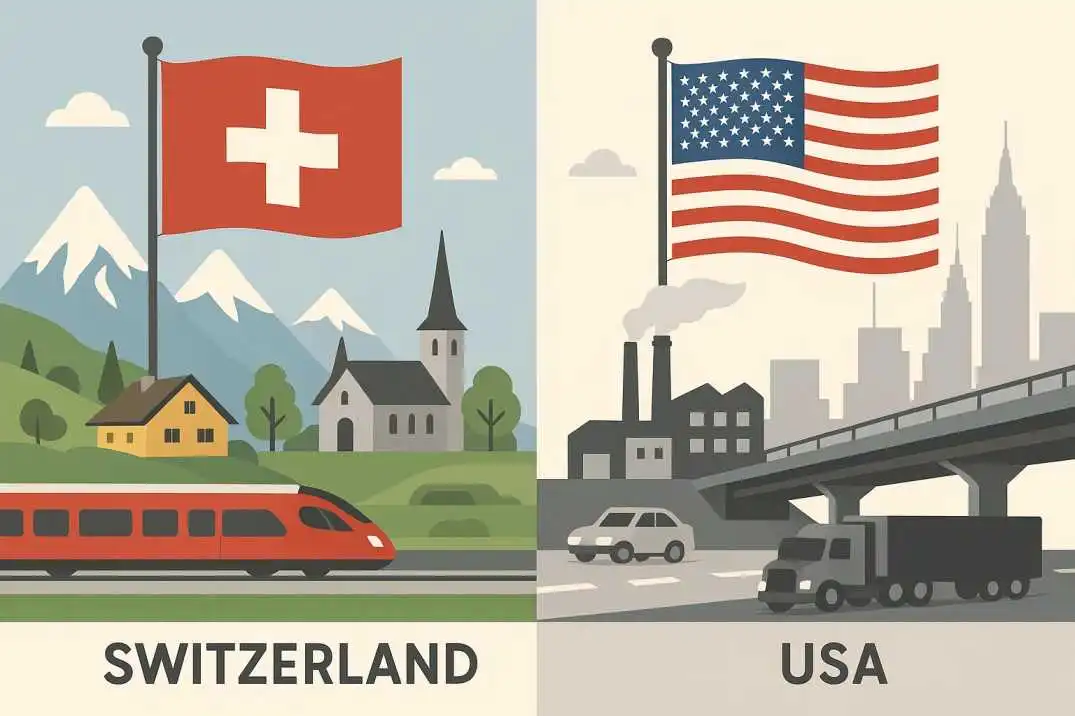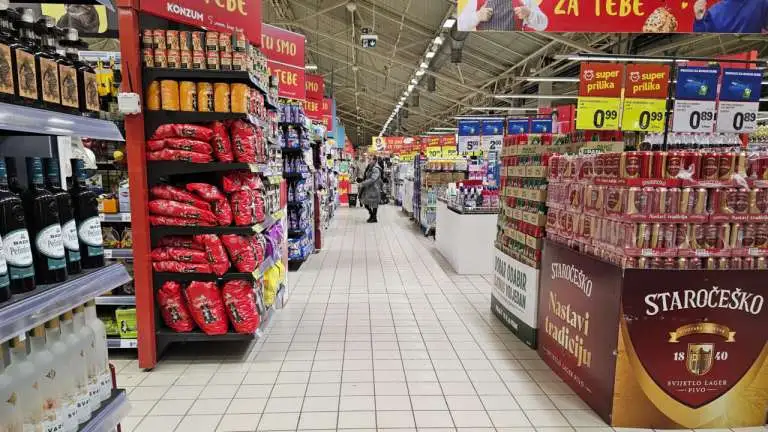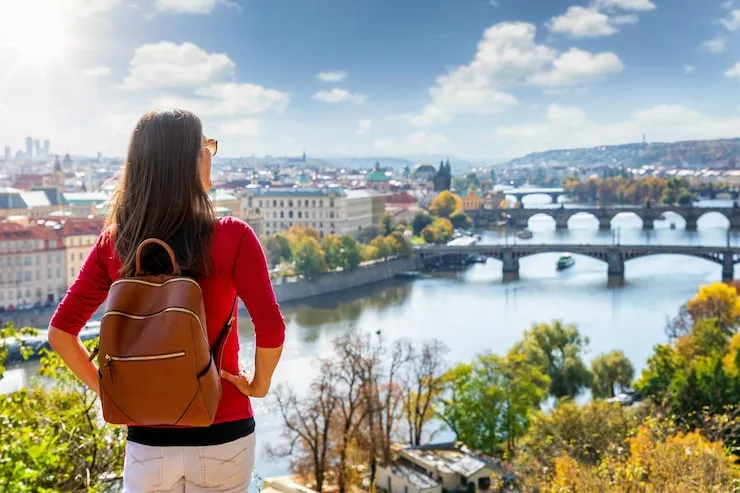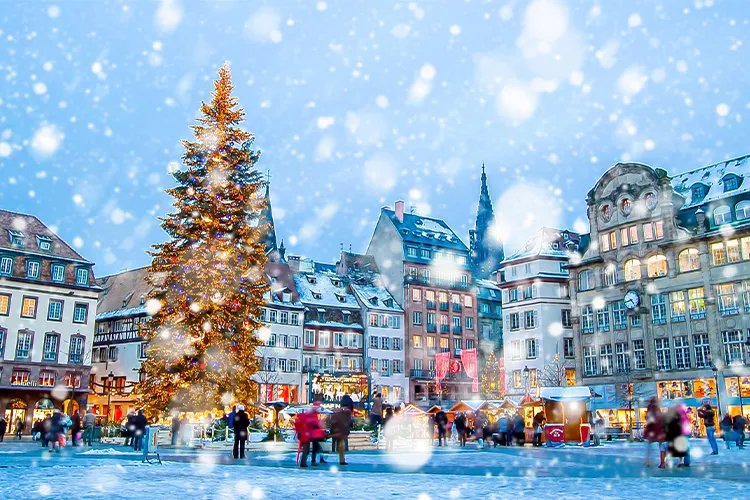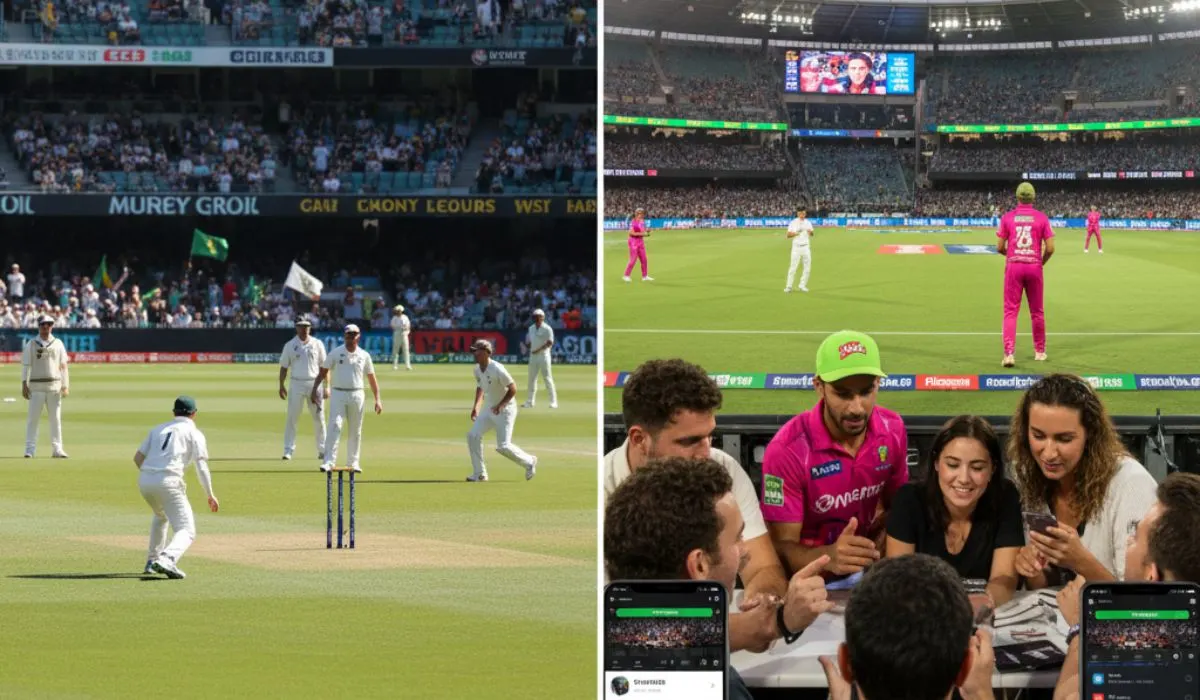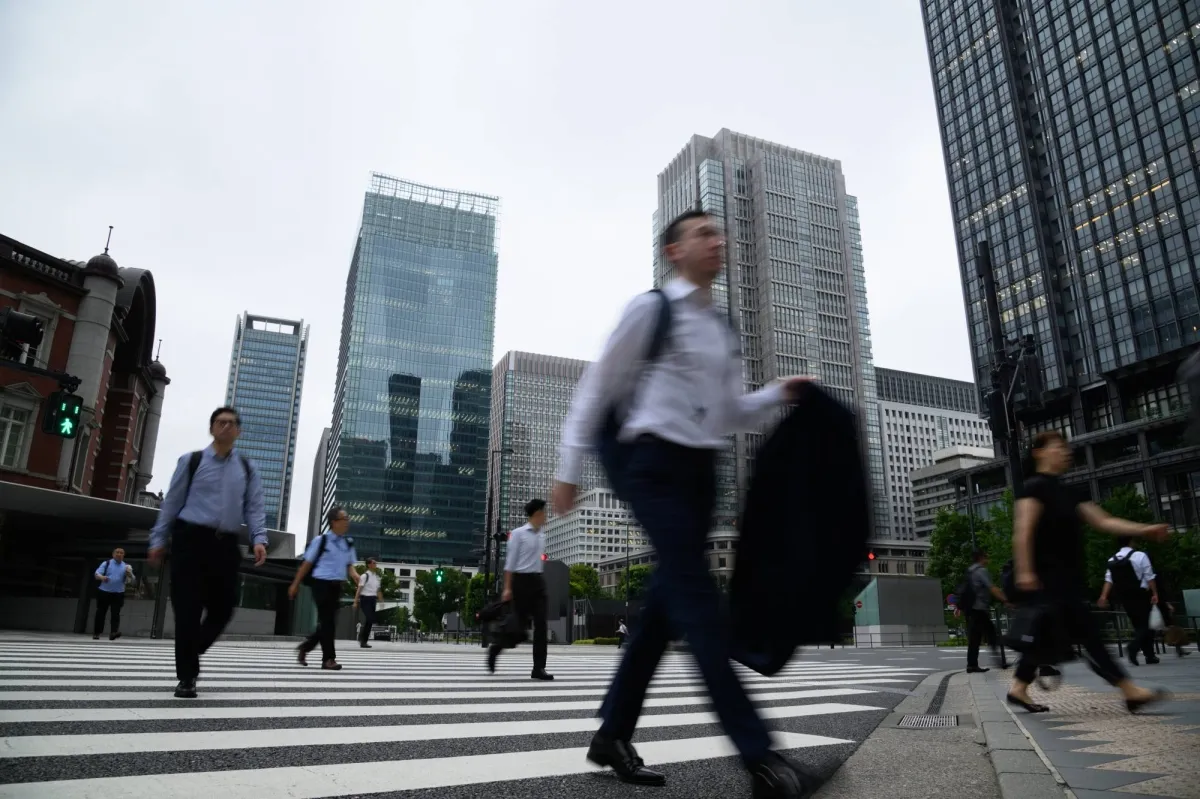
It hasn’t plane been on the air for two months, and HBO’s The Last of Us is once stuff hailed as the weightier series of 2023, thanks to its mix of artistry, emotional resonance and nightmare-inducing whoopee sequences. The story, based on the popular video game of the same name, follows Joel (Pedro Pascal), a grieving-father-turned-mercenary who must trailblaze Ellie (Bella Ramsey), a gun-slinging 14-year-old, wideness a mutant- and zombie-infested America in the produce of a near–extinction level pandemic.
The series was shot entirely in Alberta—a major insurrection for the province’s production industry, which calls this the biggest production in Canadian history. Jason Nolan, the show’s Calgary-based location manager, scouted and managed locations—everywhere from downtown main arteries to remote mountain villages. Here, he shares what gave Alberta the whet as a post-apocalyptic backdrop, why the show favoured real sites over CGI, and how they pulled off the scene that had his 18-year-old on the whet of his seat. (For those who are not unprotected up—episode five aired this past weekend—there are major spoilers ahead).
How did one of the buzziest and most expensive productions of all time end up in Alberta—and how did you get involved?
Nolan: I first heard well-nigh the possibility through the Alberta Film Commission. They were putting together a submission package to pitch the province as the location for the series, so I facilitated some photos of some of the key proposed locations. We didn’t have a lot of information at this point, just the wholesale strokes. It was definitely a competitive process. A show of this scale isn’t just looking in North America, but all over the world.
Any ideas well-nigh what made Alberta the platonic post-apocalyptic landscape?
It was the variety we have within the province, which is very important in The Last of Us. The story starts in Texas and then goes from Boston all the way to Wyoming. Alberta has the big cities, the smaller towns, the prairies, forests, mountains—all of which are featured in the show. We have pretty much every environment you can imagine other than the ocean, so I think that was our winning angle. I know the tint had a lot of unconfined things to say about Canmore and Upper River, which are both really trappy spots. And people on set kept commenting well-nigh how wipe Canada is, which was funny.

The Last of Us series co-creator Neil Druckman (who moreover created the video game) on set in Edmonton, with the Alberta Legislature towers in the distance. (HBO)
Once the project was a go, what were your first steps as location manager?
I started having initial discussions with the producers in January of 2021 and officially signed on shortly after. The first step was getting a bible created by showrunner Craig Mazin, and then reading through the scripts. Without that I was working with the production designer to unravel lanugo unrepealable key locations, get them scouted and presented and approved, starting with the most challenging, complicated sequences.
View this post on Instagram
I’m guessing episode five’s epic zombie smackdown qualifies. I think I speak for all fans when I say I’ll be sleeping with the lights on this week!
That was definitely one of the key scenes in terms of planning, budgeting, everything. For all of the major scenes, the first thing we are looking at is whether we are going to shoot on location or build something. From the start, the directive on The Last of Us has been to segregate real locations and real effects whenever possible. But due to both the whoopee and the sensitivity surrounding the climax of episode five, a build on a sealed set just made increasingly sense. My team found the location, which was a five-acre lot next to the Calgary Film Centre. A production designer and art department came up with a plan to build a real cul-de-sac, including 15 houses—and the hole.

The sinkhole was real, and it was spectacular (HBO)
So that giant sinkhole was real?
Yes. I mean, I’m sure some aspects were touched up with CGI, but our construction coordinator organized a hairdo and an excavator, and then there were engineers involved to make sure the whole thing was safe. Bloater, which is the name of the large mushroom zombie that you mentioned, was moreover a real two-face in prosthetics.
Wow. Well, congratulations. It really was spectacular to watch.
Thanks. I only saw the finished product for the first time over the weekend. I think episode five is everything that The Last of Us is meant to be, in terms of stuff amazing, terrifying, but moreover so having much emotion in the relationships between the characters. My 18-year-old son was on the whet of the hovel the whole time, so that was cool.

Nolan found the perfect home for the main character, Joel, in Upper River (HBO)
Did you shoot mostly in chronological order?
For the most part, yes. Our first shoots were the opening of episode one, which takes place well-nigh 20 years ago in Texas, so we wanted to establish that setting as stuff distinct. That’s when the regulars first meets Joel, as well as his 12-year-old daughter, Sarah. We don’t spend a lot of time in this time period, but their relationship is important to driving the rest of the series, so we needed the right location for their home. We looked at increasingly than 300 options surpassing landing on the final place in Upper River, Alberta—mostly considering of some practical specifications.
What kinds of practical specifications?
A lot of technical details that audiences don’t notice, but are important to how scenes are choreographed—like where the house was in relation to the neighbours’ home, considering of the whoopee sequence where the Mrs. Elder becomes infected and Sarah must escape. The layout was very specific: we needed the living room on the right and the staircase on the left and the kitchen just beyond. That was important for the scene where Joel carries Sarah up the stairs, which is a key tender moment surpassing he loses everything and his weft hardens. I remember finally pulling up to the right house in Upper River and knowing, Yes, we’ve finally got it.

A shot from the plane crash scene in episode one, filmed on 24th St. in Fort Macleod (HBO)
Episode one moreover has that crazy scene where the plane crashes on the street. Let me guess—real plane?
That was a combination, considering you can’t unquestionably crash a jet liner. So the part where the plane was flying was CGI, but the part on the ground and the explosion—that was all real. For that scene we found a location on 24th Street in Fort Macleod. We have agreements with all of the merchantry owners and residents to make modifications. Some buildings were painted, and we widow awnings and window dressing. For that sequence, we shut lanugo the street for a week, so we needed everybody on board.


Before-and-after of the Alberta Legislature Towers (HBO)
A good permafrost of episode two is set in the Massachusetts State House which, my sources tell me, was unquestionably the Alberta Legislature. How did you manage that?
We knew right yonder where we wanted to shoot, considering these buildings tend to squint similar in most major cities. The rencontre was that no one had every filmed in the towers before. It houses the government offices where everybody works, including the premier. I made a call, and they were willing to entertain it. We have a lot of support for our industry within government, which is nice. They happened to be in the middle of a restoration project at the time so we had to send the construction visitor yonder and pay for that on top of everything else, but it worked out well. All of the external shots were the real towers and then as much of the interior as possible. So, for example, the scene where Joel looks out the window and sees all of the zombies coming, that is the real building.

Inside the Alberta Legislature Towers (HBO)
But the scene where Tess blows up the capitol was not.
Ha! No, we didn’t wrack-up up the real building. And we didn’t imbricate it in vines or slime either. That was all on a manufactured set, created by our greens crew—they do all of the organic set dressing—and then the prosthetics department, which does the mushroom stuff.
Was that sequence the biggest challenge? At least of the episodes we have seen so far?
One of the biggest challenges was a scene in episode three, where Joel and Ellie are inward Boston for the first time. We shot that on location on The Flyover, which is the major street into the downtown cadre in Calgary coming off 108th Street. It’s a location I’ve used in the past—while shooting a car commercial on a Sunday afternoon—but in this specimen we needed it for nearly a week.
I met with just well-nigh every municipality department: traffic, police, parks, pathways, transit. It took us from Thursday to Saturday to create the set, and then we shot on the Sunday. There were a lot of moving parts—40 police officers, 200 cars on the stretch of highway underneath—but it looked unconfined and captured the abandoned, overgrown quality that was our goal. First and foremost we want the actors to victorious on set and not have to think well-nigh where they are supposed to be so they can just focus on their performance. Episode two is the episode I am most proud of.

The Flyover and 108th Street in Calgary (HBO)
Certainly it was the episode the required the most Kleenex…
Episode three sticks out for stuff its own thing. We spend time in the world of Frank and Bill, a couple who find each other in the post-pandemic world and have this totally trappy and unexpected love story. They are unfluctuating to the main plot with Joel and Ellie, but in many ways this episode is a standalone. I knew from the moment I read the script it was going to be variegated and special.
View this post on Instagram
We spent a lot of time looking for a neighourhood that was scrutinizingly a hamlet, to represent how they were removed from the hell of the rest of the series considering of their relationship. Trees were very important, as we the style of house and the neighbourhood. At one point we found a unconfined option for Bill and Frank’s house but the rest of the location didn’t work. In the end we found an abandoned neighbourhood in Upper River, where all of the streets and sidewalks were still there but the homes were gone. I made an try-on with town steering and we took over the zone for four months to build the neighbourhood. Every detail is the result of teamwork and consideration.
The level of detail is mind-blowing. Do you overly miss car commercials?
I loved working on this project for so many reasons. There is a huge value of work that went into it—almost an unimaginable amount. I’m happy that it has been so well-received.
Are you getting a lot of upper fives?
Well, my mother, who is in her 70s and rarely watches any kind of television, wants to undeniability me to talk well-nigh every episode, so that is probably the biggest compliment I can imagine.
The post How HBO’s The Last Of Us transformed Alberta into a zombie wasteland appeared first on Macleans.ca.

 (@bellaramsey)
(@bellaramsey)

